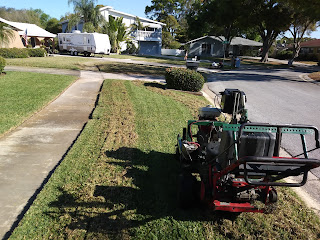 |
| Now desperate, I found two newer used Ryan Verticutters. |
 |
Yes, that is me with our original Verticutter, it died. It was so old when I called Ryan Equipment looking for parts, the gentlemen said he worked there for 30 years and had never seen one.
|
 |
| Then we Verticutt this soccer field with Bermuda grass, and the home lawn below. Just perfect for Bermuda grasses. |
 |
| Then we found this never machine was not designed for St Augustine grasses. It just ripped out the grass. |
 |
| Then I built Verticutter above then later added a winch to raise and lower the cutting unit. |
Make an appointment now for the fall Verticutting season and save $50.
Contact York: 727 455 7337 or york.ysta@gmail.com







